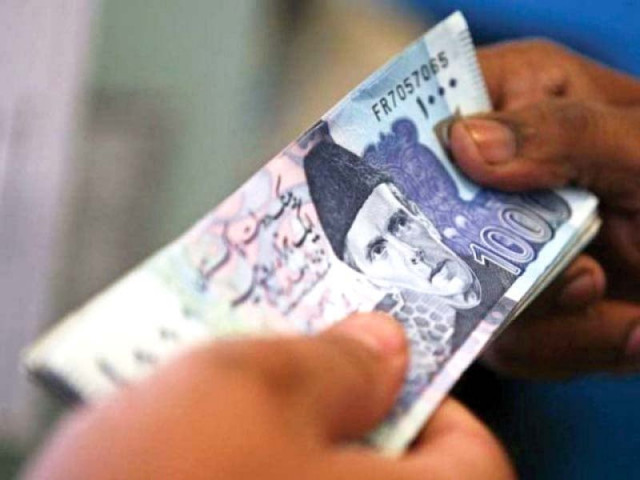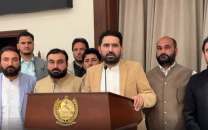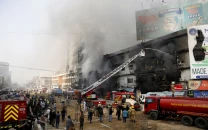Centre, provinces plan spending spree
Disregarding the country’s thin fiscal position, federal govt has proposed Rs60 billion for parliamentarians’ schemes

Amid serious fiscal constraints, the government on Saturday approved allocations to the tune of Rs2.184 trillion under the national development spending plans for next fiscal year -- higher by Rs347 billion or one-fifth over the outgoing year’s revised uplift budgets of the Centre and the provinces.
Totally disregarding the country’s thin fiscal position, the PML-N-led federal government has proposed Rs60 billion for parliamentarians’ schemes. It is 30% higher than the outgoing fiscal year’s revised spending under this head.
The Annual Plan Coordination Committee (APCC) approved a national development outlay of Rs2.184 trillion, which is higher by Rs347 billion or 19% over this year’s downward revised budget, according to a statement.
The four provinces will spend Rs1.384 trillion from their own resources while the federal government has allocated Rs800 billion for the federal Public Sector Development Programme (PSDP).
Of the Rs2.184 trillion, an amount of Rs346 billion or 16% will be borrowed from abroad to fund these schemes. The federal government will take Rs70 billion and the four provincial governments have a plan to take Rs276 billion in foreign loans in the next fiscal year.
The proposed federal PSDP is higher by Rs250 billion or 45% over this year’s revised budget of Rs550 billion. This is despite the fact that the finance ministry is struggling to spare even Rs700 billion for the next fiscal year’s PSDP, indicating that all resources will not be provided.
The four provincial governments have indicated Rs1.384 trillion spending plans -- higher by Rs97 billion or 7.5%.
The Punjab government has proposed spending Rs585 billion on development in the next fiscal year, down by Rs45 billion or 7%. However, the Sindh government has proposed Rs355 billion under the annual development plan, up by 64% or Rs138 billion over this year’s revised allocation.
The Khyber-Pakhtunkhwa government too has indicated Rs300 billion spending plan -- up by Rs54 billion or 22%, but the Balochistan government has shown a 21% reduction in spending for next year, down from Rs180 billion to Rs143 billion.
Pakistan and the International Monetary Fund (IMF) have not yet agreed on next year’s macroeconomic framework and one of the outstanding issues is the lack of consensus on provincial cash surpluses.
The budgetary plans that the four federating units have shared with the APCC suggested that the provincial governments will open their purses before the next general elections.
The APCC has approved 54% of total PSDP or Rs433 billion for the infrastructure sector. The transport and communication sector will receive Rs227 billion with some major allocations made for road projects passing through Balochistan.
The energy sector has been given Rs84 billion. The water resources will receive Rs83 billion, including Rs18 billion for Diamer-Bhasha dam and Rs55.4 billion for the Dasu hydropower project.
Read Defence budget hiked by 6% to ‘offset inflation impact’
The social sector bagged Rs144 billion or 18% of the federal budget. The High Education Commission received nearly Rs42 billion after it managed to put pressure on the government that initially wanted to allocate Rs30 billion. The health ministry has been given Rs12 billion.
The agriculture sector has been given Rs13 billion or 1.6% of the budget.
The Rs800 billion federal PSDP was equal to 46% of what the ministries had demanded from the government for the next fiscal year. The major chunk of demands was received from the water resources ministry that sought Rs279 billion but was allocated Rs97 billion.
The National Highway Authority demanded Rs317 billion but would receive Rs121.5 billion or 38% of its demand.
The Pakistan Atomic Energy Commission (PAEC) placed a demand of Rs175 billion but the government has allocated Rs25.6 billion or less than 15% of the demand. Out of Rs25.6 billion, a major chunk -- Rs15.8 billion -- has been allocated only for Karachi’s nuclear power plants.
The Power Division demanded Rs98 billion and received Rs50 billion or half of its demand.
The Aviation Division had asked for Rs30 billion but was given Rs2.4 billion, including a mere Rs2 billion for the Gwadar International Airport project.
For K-P’s merged districts, the government has approved an allocation of Rs50 billion for the next financial year. The up-scaling green Pakistan programme has been given Rs9.5 billion.
The provinces and special areas have been allocated Rs96.5 billion aimed at accommodating allied parties' development projects and finishing a few ongoing schemes. Out of this, Punjab will get Rs16.7 billion, Sindh Rs1.4 billion and K-P Rs3.6 billion.
Balochistan will receive Rs20.4 billion, as some schemes of the coalition government’s ally in Dera Bugti, which began this year and will be finished next year - have been given full allocations.
The two road projects of Dera Bugti will get the full remaining sum of Rs624 million.
Azad Jammu and Kashmir (AJK) and Gilgit-Baltistan have been given Rs29.4 billion and Rs25 billion for development respectively.
The Pakistan Railways has been given Rs33 billion for the next fiscal year. However, the Mainline-I project of the China-Pakistan Economic Corridor (CPEC) has been given mere Rs5 billion for the next fiscal year, indicating that the PML-N government does not have a plan to start work on the strategically important project. The total cost of the project is Rs1.1 trillion.
The government has allocated Rs90 billion for “Viability Gap Funding” to encourage private sector’s investment in infrastructure.












1733130350-0/Untitled-design-(76)1733130350-0-208x130.webp)






COMMENTS
Comments are moderated and generally will be posted if they are on-topic and not abusive.
For more information, please see our Comments FAQ